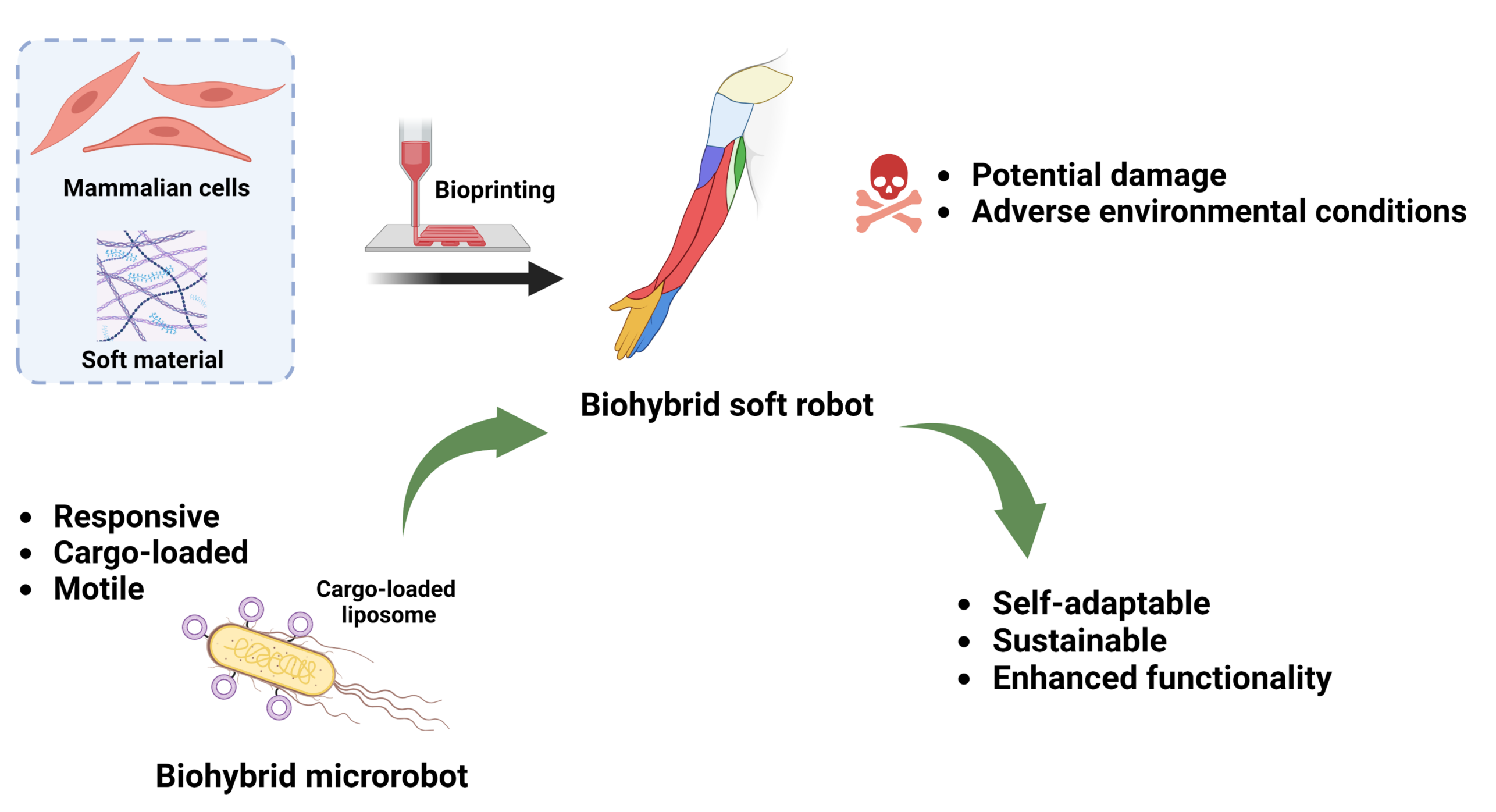Biohybrid microrobots for damage detection and repair in large scale biohybrid systems
Collaborators
PI: Simone Schürle
Fellow: Xiang Wang
Collaborators: Jess Snedeker

Goal
Engineered microorganisms and synthetic materials will be used to create biohybrid microrobots for local microscale sensing and delivery of supplies with the aim of creating a sub-layer of living intelligence in large soft biohybrid constructs. These motile microrobots will deterministically respond to certain environmental cues and damage signals of cells within the construct. Genetic circuits will be integrated on a single cell level for specific function and swarm control principles will be employed for collective actuation. These biohybrid microrobots will be released within the bioreactor, where they disperse in the fluid perfusing the constructs and circulate through their whole volume. In this environment, they will perform controllable and localized curative functions, such as targeted cargo release of cells and drugs for tissue repair. This integrated system will allow us to optimize tissue viability and ensure the desired functional outcomes.
Methodology
The project employs a multidisciplinary approach combining synthetic biology, robotics, and control theory to develop a biohybrid microrobotic system within a large biohybrid construct. In the first phase, genetic engineering techniques are utilized to modify mammalian cells as constituents of the large-scale robot as well as the microorganisms that are part of the biohybrid microrobots, enabling them to perform specific functions and synergize within the robotic system. Microfluidic devices are employed to simulate and mimic biological and biohybrid environments, allowing for controlled testing of the system's capabilities. Using cutting edge bioprinting and assembly technologies will provide precise spatial arrangement of biological or synthetic materials on living cells for control and creation of biohybrid constructs.
